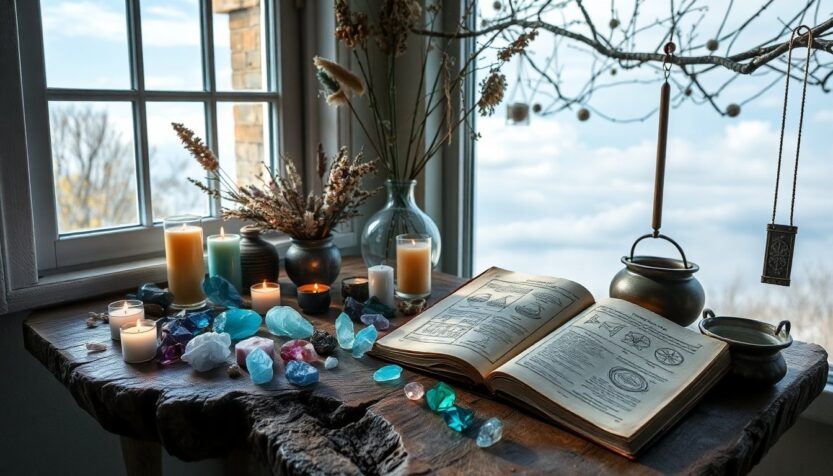The mystical realm of witchcraft has captivated human imagination for centuries, evolving from ancient practices to modern interpretations. A new wave of practitioners, often referred to as witch influencers, has emerged, utilizing social media platforms like Instagram and TikTok to share their rituals, crystal wisdom, and lunar guidance. This movement has made the esoteric accessible to a wider audience.
Historically, witchcraft’s roots stretch back to ancient civilizations. During those times, communities turned to wise individuals, known as healers or shamans, who employed folk magic to cure ailments, ensure bountiful harvests, and invoke favorable weather. Ironically, these practitioners were later accused of witchcraft as societal fears surrounding the supernatural intensified.
The journey through witchcraft history
By the 16th century, a significant shift occurred as the rise of Christianity fueled fears of the devil and sin. This led to the persecution of those who were once revered for their wisdom, as communities began associating them with dark forces. This era, marked by events such as the infamous Salem witch trials, represents a tragic chapter in witchcraft history, characterized by suspicion and injustice.
The mid-20th century witnessed a revitalization of the term “witch.” The emergence of the Wiccan movement in the United States and the United Kingdom reframed witchcraft as a positive practice, often intertwined with feminist ideologies and spirituality. Today, many are reclaiming the word “witch,” which transcends cultural boundaries and personal beliefs. It is essential to respect individual identities, as not everyone identifies with the title.
Understanding the spectrum of modern witches
In today’s landscape, witchcraft is as diverse as its practitioners. Traditional covens gather for collective rituals, while solitary practitioners forge their own paths. For instance, a coven typically consists of a group of witches led by a high priestess, uniting their magical talents to enhance their collective spells.
Conversely, a solitary witch may choose to blend multiple traditions or follow a singular path, embracing a personal journey. The beauty of modern witchcraft lies in its adaptability, allowing practitioners to connect with their true selves in an individualistic manner.
Various types of witches and their practices
Among the many types of witches, the hereditary witch inherits their practice through familial lineage, echoing tales portrayed in films like Practical Magic. Crystal witches harness the energies of stones and crystals to amplify intentions and manifest desires. For those drawn to the allure of crystals, this path may resonate strongly.
Cosmic witches, on the other hand, incorporate astrology and lunar cycles into their practices, actively engaging with celestial energies to influence outcomes. If you feel a deep connection to the cosmos and enjoy exploring its mysteries, the cosmic witch path might be particularly appealing.
Nature and healing in witchcraft
Many witches draw inspiration from the natural world. Green witches utilize herbs, flowers, and plants to create remedies and perform rituals. Those passionate about gardening and healing may identify as green witches. Similarly, hedge witches blend nature with their unique magical practices, focusing on self-developed spells and minimalistic rituals.
Other practitioners, such as folk witches, honor traditions passed down through generations. They often engage in community practices that celebrate local history and heritage. Meanwhile, eclectic witches cherry-pick elements from various traditions, creating personalized practices that reflect their unique journeys.
Exploring the playful and practical sides of witchcraft
Historically, witchcraft’s roots stretch back to ancient civilizations. During those times, communities turned to wise individuals, known as healers or shamans, who employed folk magic to cure ailments, ensure bountiful harvests, and invoke favorable weather. Ironically, these practitioners were later accused of witchcraft as societal fears surrounding the supernatural intensified.0
Historically, witchcraft’s roots stretch back to ancient civilizations. During those times, communities turned to wise individuals, known as healers or shamans, who employed folk magic to cure ailments, ensure bountiful harvests, and invoke favorable weather. Ironically, these practitioners were later accused of witchcraft as societal fears surrounding the supernatural intensified.1
Historically, witchcraft’s roots stretch back to ancient civilizations. During those times, communities turned to wise individuals, known as healers or shamans, who employed folk magic to cure ailments, ensure bountiful harvests, and invoke favorable weather. Ironically, these practitioners were later accused of witchcraft as societal fears surrounding the supernatural intensified.2

